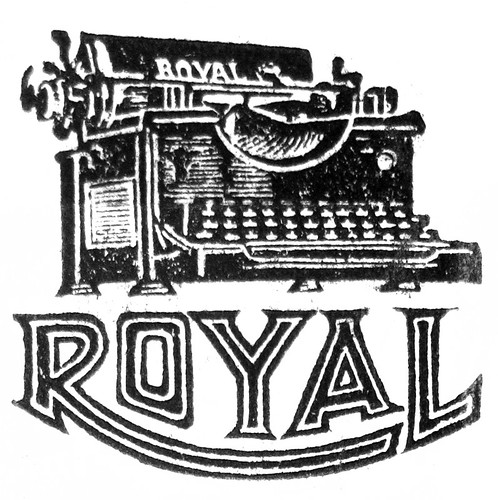- Uwe
- Moderator
 Offline
Offline 
- From: Toronto, Canada
- Registered: 12-3-2013
- Posts: 4,410
Re: Repairing/resurfacing rubber
You should of course follow the directions that came with the product. The stuff I use is sprayed directly onto the platen, left to soak for 30 to 45 seconds, then wiped off. For the longest time I was using it on the work bench, indoors in an enclosed space, without any issues, but that was because I was mostly just using one application to clean the platen of a machine I happened to be working on. However, when I used it many times over on the rock hard platen it was a case of overexposure and I won't make that mistake again.
The pronoun I has always been capitalized in the English language for more than 700 years.
- KatLondon
- Key Master
 Offline
Offline 
- From: London
- Registered: 11-10-2014
- Posts: 995
Re: Repairing/resurfacing rubber
I'm doing about four machines once or twice a day, hoping it will begin to make an appreciable difference... or do you reckon they need a concentrated hit?
- TypewriterGuy
- Typewriter Talk Vet
 Offline
Offline 
- From: United States
- Registered: 24-4-2015
- Posts: 1,250
Re: Repairing/resurfacing rubber
So this product you mentioned... Can it turn a rock hard platen into somewhat rubbery again?
Back from a long break.
Starting fresh with my favorite typer. A Royal Futura!
- Phat Dog
- New Member
 Offline
Offline 
- Registered: 03-1-2015
- Posts: 3
Re: Repairing/resurfacing rubber
Hi everyone! I haven't recovered a platen yet, but I have made new feed rollers with a product called FIMO. So far so good...no complaints as of yet. Instead of explaining the entire process here I will leave a link to the procedure, complete with photos! Happy to answer any questions!
- Phat Dog
- New Member
 Offline
Offline 
- Registered: 03-1-2015
- Posts: 3
Re: Repairing/resurfacing rubber
Well I would include a link but apparently I need to have made two posts. : (
- Phat Dog
- New Member
 Offline
Offline 
- Registered: 03-1-2015
- Posts: 3
Re: Repairing/resurfacing rubber
Link to recovering feed rollers:
- TypewriterGuy
- Typewriter Talk Vet
 Offline
Offline 
- From: United States
- Registered: 24-4-2015
- Posts: 1,250
Re: Repairing/resurfacing rubber
I have tried this on bail rollers and other small rollers (Not the platen!) succssessfully to make them soft. Get some tin foil, bunch it up, and rub it like sand paper against the roller. It may discolor the roller a tiny bit, but not very much. It will improve te grip of the roller greatly.
Back from a long break.
Starting fresh with my favorite typer. A Royal Futura!
- Spazmelda
- Key Master
 Offline
Offline 
- From: Ohio
- Registered: 25-2-2015
- Posts: 830
Re: Repairing/resurfacing rubber
Richard Polt did my Rheinmetall feed rollers (they were beyond any sort of saving). He used automotive tubing. When I was at the typewriter meeting I was talking to Greg Fudacz (don't think I spelled that right, but he's the guy who does Antikeychop) and he said he finds windshield wiper fluid tubing, in particular, to be a good place to start looking for material for replacement feed rollers.
- Repartee
- Key Master
 Offline
Offline 
- From: Brooklyn
- Registered: 12-10-2015
- Posts: 683
Re: Repairing/resurfacing rubber
KatLondon wrote:
I use rubber rejuvenator on all my platens when /i first get the typewriters and give them a good thorough clean, and it does indeed improve the platen. If there's anything there to improve. I haven't seen it make any appreciable difference in a platen that is rock-hard and, eg, making holes in the paper when you type.
You mean that's not normal? I just thought it was my over hard touch, LOL! My periods invariably punch holes and my lowercase l's cut the paper, so I always use at least two 20 lb. backing sheets - more to protect the platen, than anything else. Being continually attacked with small punches cannot improve it.
"Damn the torpedoes! Four bells, Captain Drayton".
- Uwe
- Moderator
 Offline
Offline 
- From: Toronto, Canada
- Registered: 12-3-2013
- Posts: 4,410
Re: Repairing/resurfacing rubber
A hard platen isn't the only possible cause for a type slug to act as a hole punch. Ring and cylinder adjustments can play into it as well; if the proper clearance doesn't exist between the type slug and platen a type slug can easily damage the paper being typed on.
The pronoun I has always been capitalized in the English language for more than 700 years.


